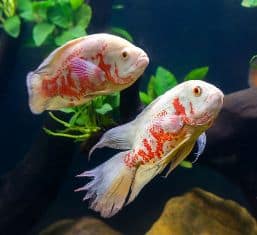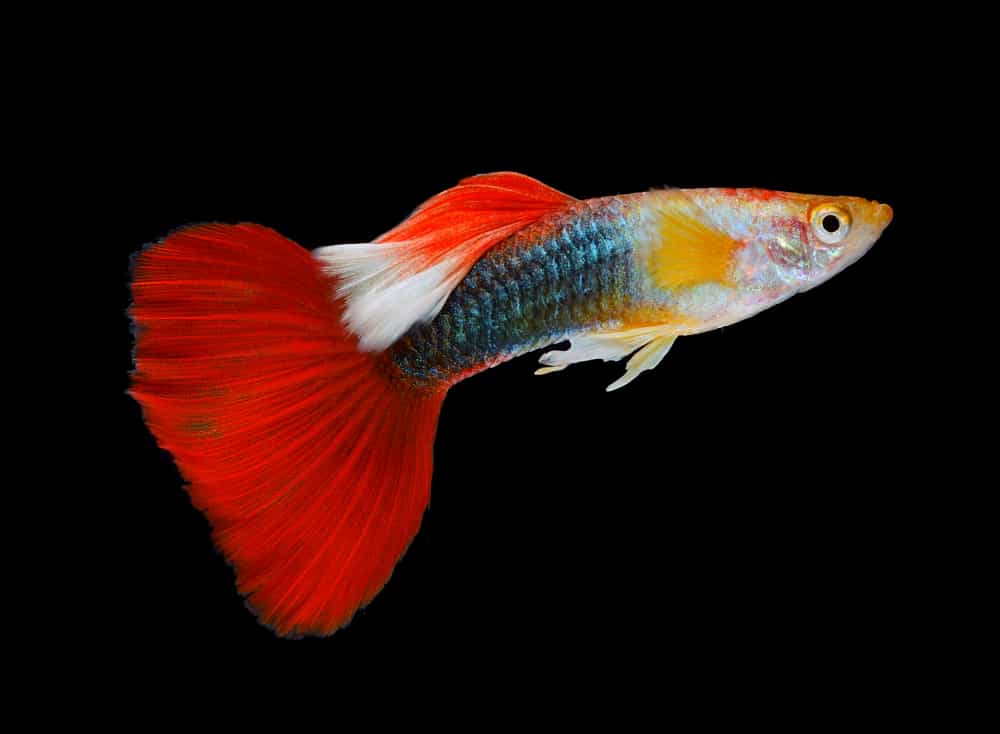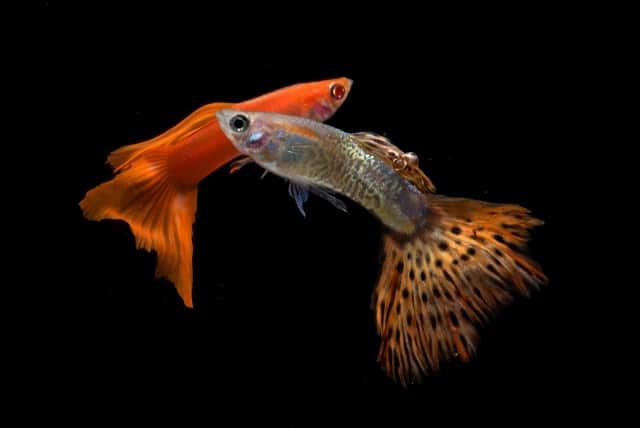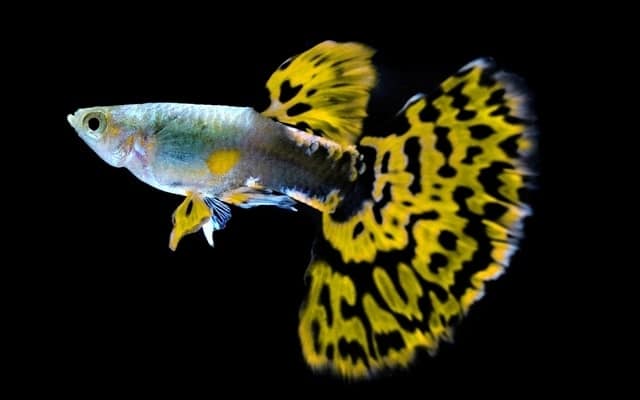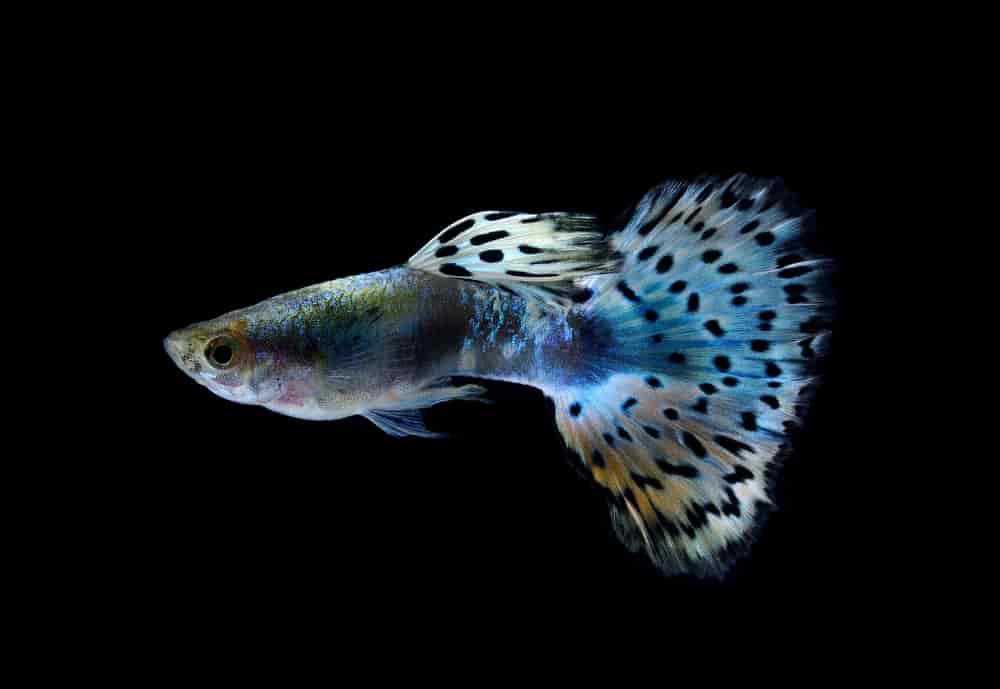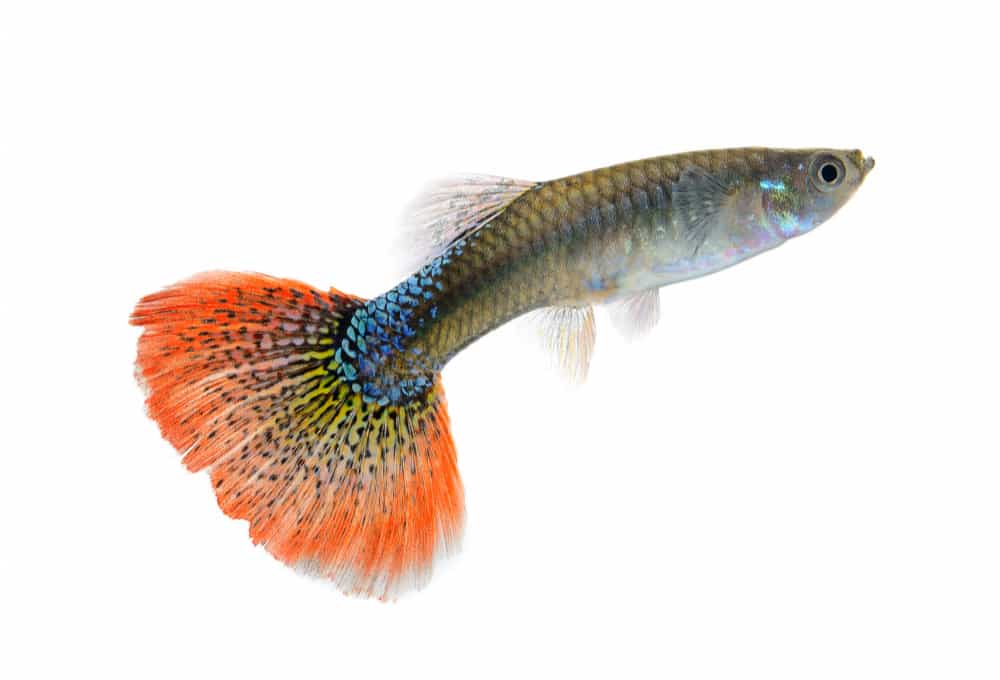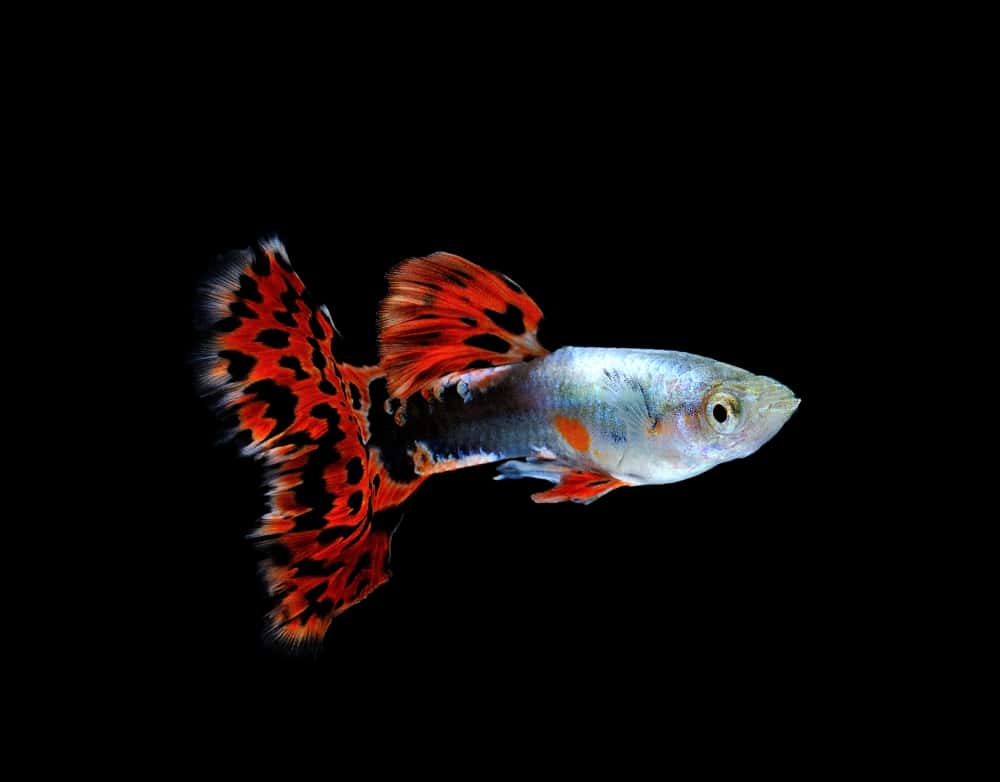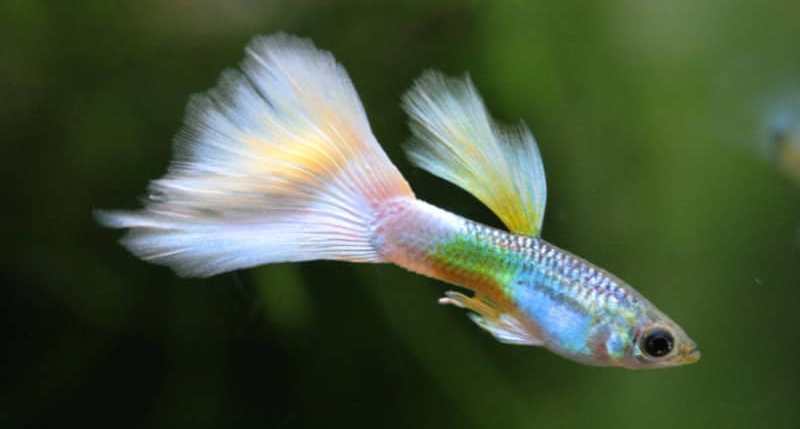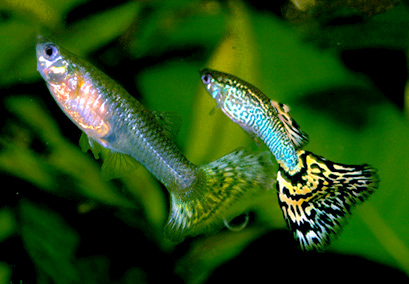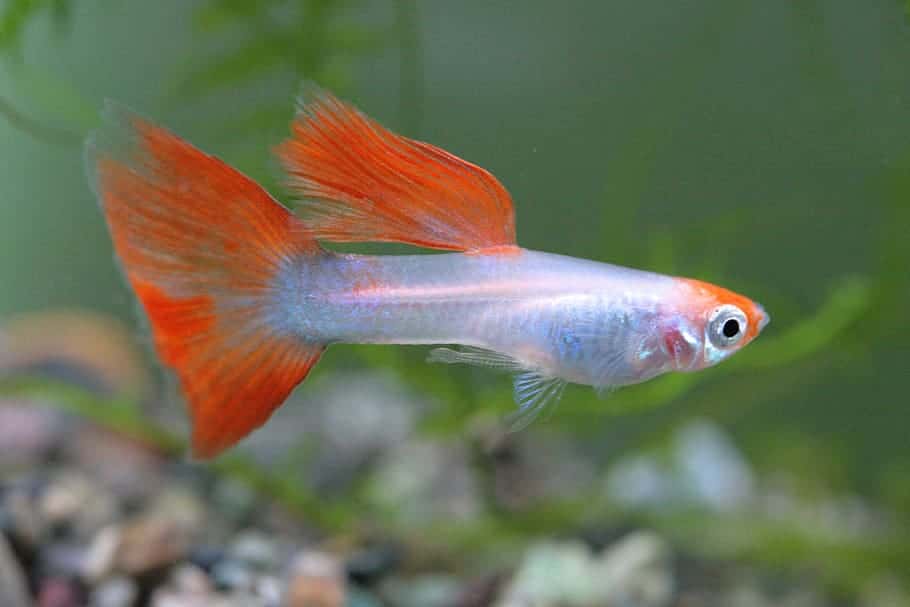Unlock the Secrets of Breeding Beautiful Guppies: A Step-by-Step Guide with Stunning Visuals
If creating your own strain of Guppies and presenting the strain to the public sounds interesting, this information may prove valuable.
Strains and genetics (or “Where did these colors come from anyway?”)
There is a wide variety of colors and patterns in wild Guppy populations, even albino strains. Fish that share their habitat with predators typically have less vivid colors, while fish that don’t face these problems have more dazzling colors.
The reason the wild male fish have color spots here and there is because those spots proved help in showing the female the male is healthy. Male guppies with color spots get to mate more often with the females.
Breeders emphasize these color spots through selective, artificial breeding. These Guppy breeds have different colors, patterns, shapes, and sizes, and can go by such names as Snakeskin, Moscow, Tuxedo, and other varieties.
The goal of breeding Guppies is to have them show the same characteristics repeatedly through each subsequent generation.
Today, the many types available resulted from an ongoing selection process of those wild types by German, American, and Japanese enthusiasts.
How can you tell males from female Guppies? (Sexual dimorphism)
In adult Guppies, differences in the sexes are pretty clear. The male has more beautiful, larger, and colorful fins. Also, the anal fin changes into a gonopodium. A gonopodium is the anal fin of a male fish that transforms into a copulatory organ is it matures.
Females have a small spot on the belly, near the tail, which becomes darker when pregnant. While wild-type females are gray in body color, males have splashes, spots, or stripes that can be any of a wide variety of colors. The size of Guppies varies; some females can exceed 2.5 inches (7 cm) while males measure approximately 1.5 inches (3 to 4 cm).
Reproduction Overview
The Guppy is one of the easiest fish to breed, and most of the time, you won’t even be able to control the growing population of these fish in your aquarium.
Guppies, like mollies, platies and swordtail fish, are livebearing which means the fertilizing of the eggs happens inside the female. Because females mature their eggs inside their bodies, they give birth to fully formed fry (baby Guppies).
Females can “stock” sperm from males for up to 8 months, so a female already fertilized by a male can have up to 3 pregnancies even without contact with other males. In fact, it would be unusual to buy a female Guppy that wasn’t already pregnant.
The Guppy embryos grow for four to six weeks inside the female. Females will give birth to 20 to 40 offspring. The fry measure approximately .25 inches (6 mm) when born. The baby Guppies are on their own as soon as they are born. This can lead to cannibalism, even from the mother. You can protect the new born fry by using a breeding box. (amazon link)
Keeping fish can be costly, but there's a great way to offset those expenses.
Consider creating your own income producing website, just like I did with this one! I advertise Divi website creator, but you could place other ads on your website.
I've used Divi Wordpress website builder to build this site, and it's incredibly user-friendly. With its drag-and-drop interface, creating your own website becomes a breeze.
Simply tap this box to get started and see how easy it is to create a website with Divi.
The cost is $89/year. This is $7.41 per month. Divi comes with a 30 money-back guarantee. Try it at no risk.
Take this box to visit the Divi website to learn more. The link opens in a new window.

* Great Video: How to make a Website | Divi Tutorial 2024
The Guppy Tank
To keep a group of three females and one male, I recommend an aquarium of at least 10 gallons (40 liters).
Guppies are very active fish but occasionally like to hide in different aquarium environments such as dense plants and caves. Add this type of decoration to give them a little more security.
A specific substrate is not crucial to Guppies, as they spend nearly all of their time near the surface of the water.
Tank parameters for breeding healthy Guppies:
* An aquarium large enough to house your Guppies so that they are not over-crowded (10-gallons+ per trio). Over-crowding cause fish stress. Stress kills fish.
* A filtration system. It can be simple with a sponge filter, hang on the back filter, or more complex with an internal filter, or a canister filter.
* A constant temperature between 73° to 79° F (23° to 26° C).
* pH somewhat alkaline, between 7.0 and 7.8.
* Regular maintenance with tank cleaning and water changing.
How to breed guppies
Breeding Guppies is easy. You select one male and three non-pregnant, healthy females and place them all in a breeding tank. The male guppy will take it from there. Reproduction is less stressful for females when the male’s attention is divided between three female Guppies.
Since the females are probably pregnant when you obtain them, I would keep them in a “no males, no fry” tank for several months before breeding.
Use an aquarium of 10-gallons+ (40 liters), already cycled, and with all the pieces of equipment needed to support the life of the fish.
Put the adult Guppies in this breeding tank and, with good quality food, the fish will naturally breed.
When you notice a small dark spot on a female’s abdomen, you know she’s pregnant.
Gestation time can vary, but generally lasts around 26 to 31 days. Feed pregnant females small nutritious meals several times a day.
Guppy females usually hide and shudder when they are about to give birth. Remove any adults in the tank when you find that a female is giving birth. Provide the fry plenty of hiding places. When the birthing female is finished, remove her as well.
Fry can eat commercial food, brine shrimp nauplii, and other live or fresh food that will fit in their mouths.
It is essential to maintain good water quality by performing cleaning maintenance and continuous water changes until the fry are large enough to be transferred to the original aquarium or into a larger guppy fry only tank.
Tap picture above to buy Amazon.com guppies.
Selecting the breeding males:
1. Select the males by eliminating the small, thin, malnourished, and those with small dorsal (back) fins and caudal (tail) fin.
2. Remove the male Guppies that aren’t uniform in color or pattern.
3. Remove the males with large spots and physical deformities. For example, an arched back, a flathead, a humpback, or a crooked body.
4. From those that are left, select the most significant fish (those with a thick body and large tail fin).
5. Then from those, select the one(s) with the best behavior like robust appetite, perfect swimming, and overall healthy appearance.
Grow Beautiful Aquarium Plants Without Substrate
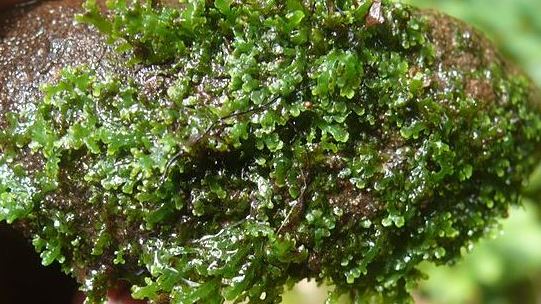
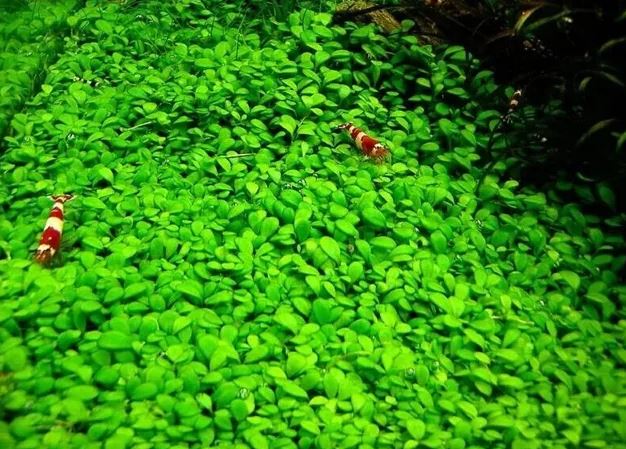
Selecting the breeding females:
Eliminate the smallest, the short and thin, and those female Guppies with an overly narrow caudal peduncle (the narrow part of the fish’s body that connects the tail to the body).
Then remove females with any deformity, for example, an arched back, a flathead, a humped back, crooked fins, etc.
Also remove any females with an unwanted color pattern (opaque fins, half-black, iridescent, etc.).
Like the males, select the females with the best behavior (a good appetite, perfect swimming, etc.).
Then select for overall general appearance like shape (a large and fat body), and color pattern (no blemishes, snakeskin pattern, etc.).
This photo of a male and female guppy is provided by Wikipedia.
How can you create your own strain of Guppies?
You can start your own breeding lines, say “Buba’s Blue Guppies” in your home.
To do this, and have it work, start with several stabilized strain, trios (one male, 2 females) that have a color similar to what you want your end product to look like.
As mentioned before, if you buy breeding size Guppies, you’ll have her mate with a strongly colored male once she stops giving birth, two or three months after purchase.
It’s imperative that you keep the males away from the female you wish to breed.
The most critical moment of a breeding program is the selection of the breeding trio(s). Just follow some simple rules, and you will choose them correctly.
The color you are attempting to achieve will give you an idea of how long it will take to get the consistent color and pattern you are aiming for. Colors difficult to achieve may take many, many generations before they breed true.
The Guppy breeder interested in crossing experiments will find that many combinations of color genes have been refined, but that doesn’t mean that the public wouldn’t desire “Buba’s Blue Guppies”.
Conclusion
If you’re experienced in caring for fish and want to start your own Guppy strain (like Buba’s blue Guppies) that can be done fairly simply and quickly.
Tap picture above to buy Thailand guppies.
Confessions of an Angelfish Keeper - A Guide to Angelfish Care
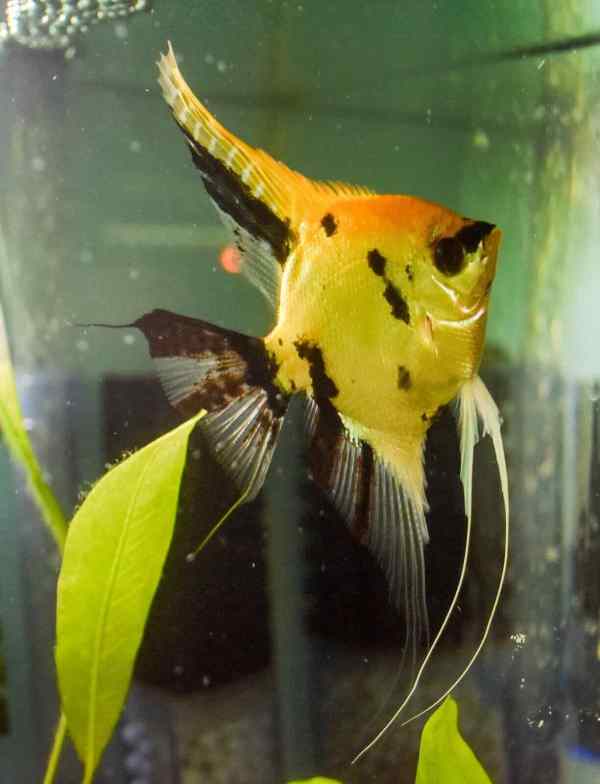
References used in creating this article:
Anna Lindholm, Felix Breden, “Sex Chromosomes and Sexual Selection in Poeciliid Fishes”, The American Naturalist 160(S6), pg. S214, (2002); doi:10.1086/342898 https://pubmed.ncbi.nlm.nih.gov/18707478/
Khoo, Gideon; Lim, Tit Meng; Chan, Woon-Khiong; Phang, Violet P. E. (1999). “Genetic Basis of the Variegated Tail Pattern in the Guppy, Poecilia reticulata”. Zoological Science. 16 (3): 431–437. doi:10.2108/zsj.16.431.S2CID73606453. http://www.igees.org/wp-content/uploads/2019/09/genetic_basis_veriegated_tail_pattern.pdf
Masamichi Nakajima, Nobuhiko Taniguchi, “Genetic control of growth in the guppy (Poecilia reticulata)”, Aquaculture 204(3-4), pg. 393, (2002); doi:10.1016/S0044-8486(01)00826-2
Nuyuca, F. Genetic Studies of Melanic Color Patterns and Atypical Sex Determination in the Guppy, Poecilia reticulata, Copeia 1979, 2 pp. 225-231, and Cytological Aspects
Oscar Fish
